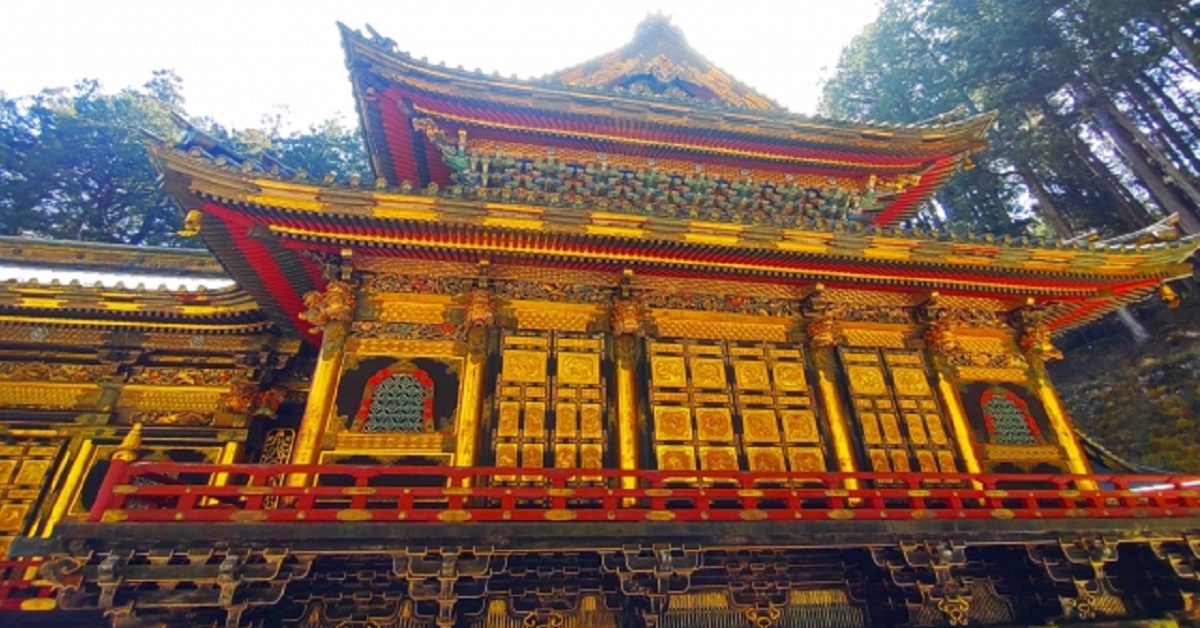Located in the sacred city of Nikkō, the Rinnō-ji Taiyū-in Mausoleum is the final resting place of Tokugawa Iemitsu, the third shōgun of the Edo Shogunate. This site combines exquisite architectural beauty with a deep sense of solemnity, offering travelers an unforgettable glimpse into Japan’s cultural and historical legacy.
Overview of the Taiyū-in Mausoleum
The Taiyū-in Mausoleum was completed in 1653 to enshrine Tokugawa Iemitsu. He was the grandson of Tokugawa Ieyasu, the founder of the shogunate, and admired his grandfather deeply. In his will, Iemitsu ordered that his mausoleum should be more modest than Ieyasu’s Tōshōgū Shrine.
As a result, Taiyū-in embodies grandeur tempered with dignity and restraint. While Tōshōgū dazzles with extravagance, Taiyū-in symbolizes quiet authority. It is part of Rinnō-ji Temple and, along with Tōshōgū and Futarasan Shrine, is included in the UNESCO World Heritage listing “Shrines and Temples of Nikkō.”
Architectural Features
The Taiyū-in Mausoleum is a masterpiece of Edo-period architecture. Its gates and halls showcase lacquer, gold leaf, vivid colors, and intricate carvings.
| Feature | Description |
|---|---|
| Year of Completion | 1653 |
| Style | Gongen-zukuri |
| Enshrined Deity | Tokugawa Iemitsu |
| Characteristics | Rich use of gold and lacquer, detailed carvings |
| National Designation | National Treasure |
The layout gradually increases in solemnity as one proceeds along the approach. This design shows that the very act of worship is embedded within the architecture itself.
Differences from Nikkō Tōshōgū
Tokugawa Iemitsu left clear instructions: “Never surpass my grandfather’s mausoleum.” For this reason, the Taiyū-in, though luxurious, is built more humbly than Tōshōgū.
| Aspect | Tōshōgū | Taiyū-in |
|---|---|---|
| Impression | Extravagant and dazzling | Majestic yet serene |
| Enshrined Figure | Tokugawa Ieyasu | Tokugawa Iemitsu |
| Decoration | Colorful carvings and gold leaf | Ornate yet subdued |
| Atmosphere | Bright and lively | Heavy and solemn |
Visiting both sites reveals contrasting aesthetics—Tōshōgū representing brilliance, and Taiyū-in representing restrained dignity.
Highlights
Several features make the Taiyū-in Mausoleum remarkable:
- Niōmon Gate – guarded by powerful Niō statues
- Nitenmon Gate – decorated with vivid carvings of guardian deities
- Yashamon Gate – protected by fierce Yasha statues symbolizing exorcism
- Main Hall (Honden) – the most sacred space, enshrining Iemitsu
The Yashamon Gate is particularly striking, with four vividly carved guardian statues full of power and motion, leaving a lasting impression on visitors.
Tokugawa Iemitsu, the Third Shōgun
To fully appreciate the mausoleum, it is important to understand the life of Tokugawa Iemitsu.
| Item | Details |
|---|---|
| Year of Birth | 1604 |
| Became Shōgun | 1623 (at age 19) |
| Major Policies | National seclusion (Sakoku), Sankin-kōtai system |
| Character | Revered his grandfather Ieyasu, valued authority |
| Year of Death | 1651 |
Iemitsu consolidated the Edo Shogunate, ensuring stability for generations. The Taiyū-in Mausoleum serves as a symbol of his authority and reverence for tradition.
Why It Is Recommended for International Visitors
The Taiyū-in Mausoleum offers experiences beyond sightseeing:
| Reason | Description |
|---|---|
| Japanese Aesthetics | Firsthand view of gold leaf, lacquer, and woodcarving techniques |
| Historical Insight | Understanding the Tokugawa Shogunate and Edo politics |
| UNESCO Site | Part of the “Shrines and Temples of Nikkō” since 1999 |
| Harmony with Nature | Surrounded by forests, with seasonal scenery |
Visiting the site provides both cultural enrichment and artistic appreciation.
Access and Nearby Attractions
The mausoleum is easily reached—about 10 minutes by bus from Tōbu Nikkō Station, followed by a short walk.
Nearby attractions include Tōshōgū Shrine, Futarasan Shrine, Chūzenji Lake, and Kegon Falls, making it possible to enjoy both cultural heritage and natural beauty in a single trip.
| Nearby Spot | Highlight |
|---|---|
| Tōshōgū Shrine | Mausoleum of Tokugawa Ieyasu |
| Futarasan Shrine | Center of Nikkō mountain worship |
| Chūzenji Lake | Scenic lake with autumn foliage |
| Kegon Falls | One of Japan’s three great waterfalls |
Autumn foliage brings vivid colors, while winter snow transforms the site into a magical, serene landscape.
Conclusion
The Rinnō-ji Taiyū-in Mausoleum embodies the authority and aesthetics of Tokugawa Iemitsu. Together with Tōshōgū, it represents the contrasting values of two generations of the Tokugawa family.
By combining history, art, and nature, Taiyū-in offers an unforgettable experience for travelers. For those seeking to understand Japan’s spirit through its cultural heritage, this site is a destination not to be missed.






